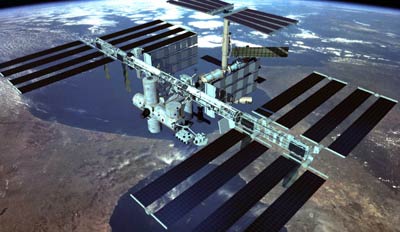Medical research on the ISS: will it payoff at last?by Taylor Dinerman
|
| Since the first elements of the station were launched in 1998, a great number of medical experiments have been performed on the station but no one has, so far, been able to point to a single medical or biological breakthrough that has occurred due to this work. |
Based on limited protein crystal growth experiments done on board the shuttle, researchers at the Center for Macromolecular Crystallography at the University of Alabama claimed in 1999 that “This research has led to the development of a new generation of pharmacologicals that are currently in preclinical or clinical trials for diseases such as T-Cell Lymphoma, psoriasis, rheumatoid arthritis, AIDS, influenza, stroke and other cardiovascular complications.” The process of bringing new drugs and treatments to the marketplace is a long, complex, and very expensive one. If there have been dramatic breakthroughs in these areas due to space-grown products in the last eight years, NASA has failed to bring them to the public’s attention.
The US space agency is just not in the business of developing new medicines. It conducts a lot of biomedical research, but it does so more for the sake of science than with any well-defined business goals in mind. The messy and disorganized nature of basic research is hard to fit into the disciplined, step-by-step procedure mandated by the FDA. To criticize NASA for this is like blaming a bear for not being a gazelle.
Only the private sector has the right set of motivations and resources to effectively exploit the medical research possibilities inherent in the ISS. The SPACEHAB corporation, based in Texas, aims to be the premier space medical manufacturing company. After nearly being delisted from the NASDAQ exchange and flirting with bankruptcy after the Columbia disaster, this company hopes to reinvent itself as entrepreneurial space manufacturer, rather than as a NASA service provider.
SPACEHAB’s new CEO, turnaround specialist and venture capitalist Thomas B. Pickens III, says that the ISS is a “generally unexploited manufacturing platform for the production of various life-altering pharmaceuticals and materials.” With good reason, he anticipates that in the near future there will be plenty of spare space inside the onboard “racks” that can be adapted to commercial purposes. NASA cutbacks in ISS science are not being replaced by funded research from Europe or Japan, who, after all, have to fund experiments in the racks on their own modules. The opportunity to actually make stuff on the ISS rather than just to study it is obvious. The big question is, can it be done profitably?
SPACEHAB is lucky in the sense that they will not have to pay for the capital costs of building the ISS. They have the use of a $100-billion facility, and will only have to pay a small fraction of the cost. They company itself has built up an in-house level of payload processing expertise that should, in theory, help it fit out the racks with the crystal protein growth devices. If they can make money on these, then they will be able to shift to additional microgravity manufacturing. First, however, they must show that they can make this part of their business plan work effectively.
The great virtue of this plan is that if successful it will durably insert space-based operations into the drug development process. This will open up a flow of capital for space investments from organizations and individuals who normally invest in the biomedical field—and they have a lot more money than the few individuals, and even fewer institutions, who have so far put money into the “NewSpace” segment of the industry.
| Space manufacturing has, in the long term, enormous potential, but in the near term there are only a few niche markets where it can be made to work. |
The danger is that SPACEHAB may succeed, but with fairly low profit margins and will bring down on themselves a regulatory ton of bricks. A new venture such as theirs could be stifled by a few overly zealous bureaucrats and politicians. To avoid such an outcome they will need lots of luck and a low profile. One hopes they will have learned from Monsanto, which promised that genetically modified crops would solve many of the world’s problems with pollution and hunger. They brought down upon themselves the wrath of the environmental movement and the industry has not yet recovered.
Space manufacturing has, in the long term, enormous potential, but in the near term there are only a few niche markets where it can be made to work. SPACEHAB may have found at least one of these. As long as they keep expectations to a realistic level and remain a valued member of the ISS partnership they can lead the way, one baby step at a time, towards a new space based economy.
